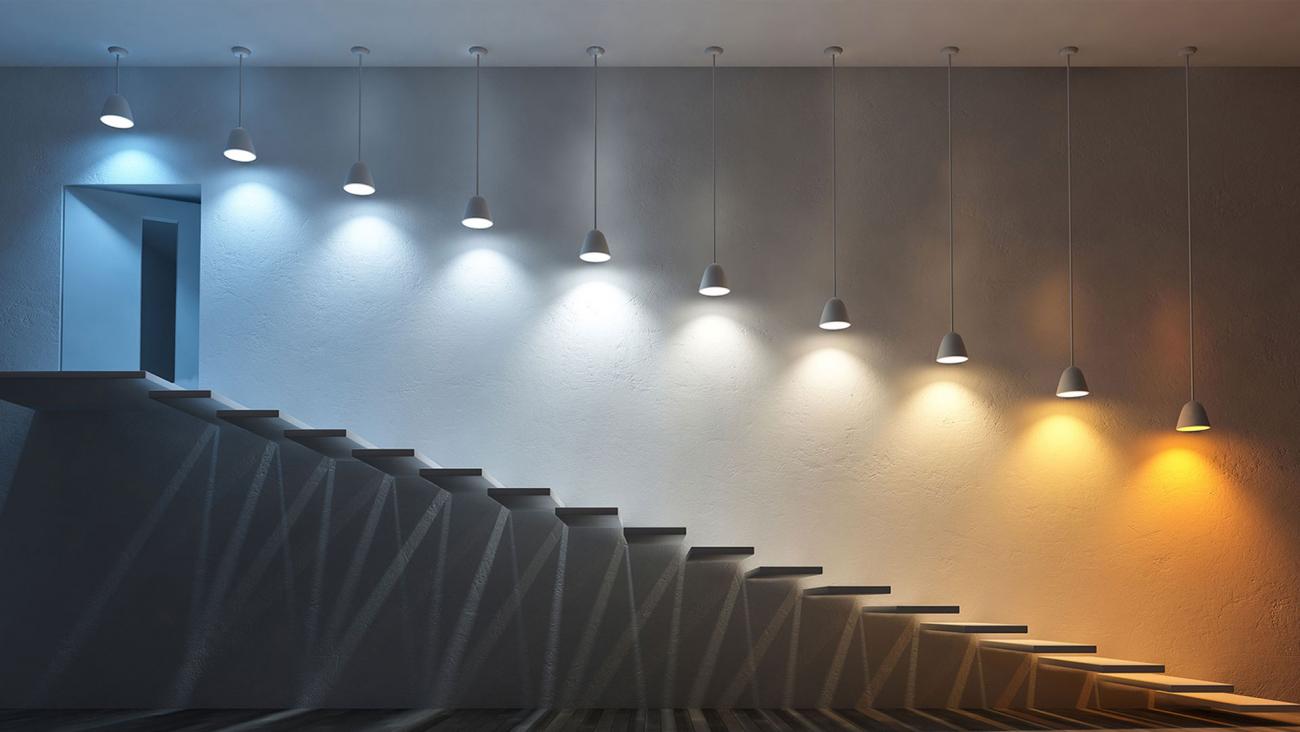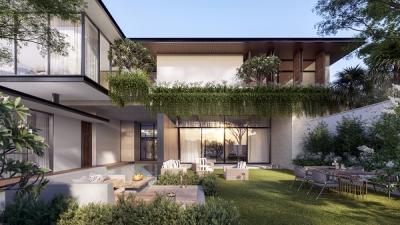
What is Color Temperature?
Color temperature corresponds to the temperature of an ideal black-body radiator that emits light of comparable hue. It is conventionally expressed in kelvin, a unit of absolute temperature. The range of color temperatures includes:

Below is a reference table of Color Temperature (CT) and CT correlation of some natural and artificial light sources in Kelvin, K
| Light sources | CT (Kelvin. K) |
|---|---|
| Flame of match stick | 1700 |
| Candle flame, sunset/sunrise | 1800 |
| Incandescent light bulb | 2700–3300 |
| Studio lamps, photofloods, etc. | 3200 |
| Carbon-arc, acetylene oxygen flame | 3700 |
| Moonlight, xenon arc lamp | 4100 |
| Horizon daylight | 5000 |
| Vertical daylight, electronic flash | 5500–6000 |
| Overcast daylight | 6500 |
| LCD or CRT screen | 6500–9300 |
Source: sciencedirect
How Does Color Temperature Work?
Incandescent light sources, such as tungsten lamps, emit light through heated material. As the material’s temperature rises, its color changes—red at lower temperatures, yellow, and eventually near-white at higher temperatures. However, incandescent light sources are not perfect black-body radiators, and their color depends on selective absorption and emission properties.
For non-incandescent sources like fluorescent lamps or LEDs, color temperature is described using Correlated Color Temperature (CCT). CCT approximates the temperature of a black-body radiator that would produce a similar hue, though it does not represent the spectral distribution of such light sources.
Applications of Color Temperature
Understanding and leveraging color temperature has widespread implications, including:

2. Interior and Exterior Lighting

3. Astrophysics and Manufacturing
In these technical fields, precise measurements of light color and temperature are crucial for analysis and quality control.
Challenges in Using CCT
While CCT is a useful metric, it has limitations:
For example, fluorescent lamps and LEDs, despite their low heat generation, can have CCTs similar to high-temperature radiators but display varying abilities to replicate natural daylight or render colors accurately.
Final Thoughts
Color temperature is more than a technical term; it is a vital factor shaping how we perceive and interact with environments. By understanding its nuances, we can make informed choices in design, photography, and other fields, creating spaces and visuals that resonate with desired aesthetics and functionality.
Source: VNbuilding

The News 25/12/2025
Walking by Ba Son at night and seeing the sky like "turning on the screen"? It is highly likely that you have just met Saigon Marina International Financial Centre (Saigon Marina IFC) – a 55-storey tower at No. 2 Ton Duc Thang (District 1). The façade LED system makes the building look like a giant "LED Matrix": standing far away, you feel like the whole tower is broadcasting content, constantly changing scenes according to the script.

The News 14/12/2025
Architectural Digest gợi ý Cloud Dancer phù hợp với plush fabrics và những hình khối “mềm”, tránh cảm giác cứng/rigid; họ liên hệ nó với cảm giác “weightless fullness” (nhẹ nhưng đầy) [3]. Đây là cơ hội cho các dòng vải bọc, rèm, thảm, bedding: màu trắng ngà làm nổi sợi dệt và tạo cảm giác chạm “ấm”.Pantone has announced the PANTONE 11-4201 Cloud Dancer as the Color of the Year 2026: a "buoyant" and balanced white, described as a whisper of peace in the midst of a noisy world. This is also the first time Pantone has chosen a white color since the "Color of the Year" program began in 1999. Pantone calls Cloud Dancer a "lofty/billowy" white tone that has a relaxing feel, giving the mind more space to create and innovate [1].

The News 04/12/2025
The Netherlands is one of the most vulnerable countries to climate change, with about a third of its area lying below sea level and the rest regularly at risk of flooding. As sea levels are forecast to continue to rise and extreme rains increase, the government is not only strengthening dikes and tidal culverts, but also testing new adaptation models. Floating housing in Amsterdam – typically the Waterbuurt and Schoonschip districts – is seen as "urban laboratories" for a new way of living: not only fighting floods, but actively living with water. In parallel with climate pressures, Amsterdam faces a shortage of housing and scarce land funds. The expansion of the city to the water helps solve two problems at the same time: increasing the supply of housing without encroaching on more land, and at the same time testing an urban model that is able to adapt to flooding and sea level rise.

The News 20/11/2025
Kampung Admiralty - the project that won the "Building of the Year 2018" award at the World Architecture Festival - is a clear demonstration of smart tropical green architecture. With a three-storey "club sandwich" design, a natural ventilation system that saves 13% of cooling energy, and a 125% greening rate, this project opens up many valuable lessons for Vietnamese urban projects in the context of climate change.

The News 10/11/2025
In the midst of the hustle and bustle of urban life, many Vietnamese families are looking for a different living space – where they can enjoy modernity without being far from nature. Tropical Modern villa architecture is the perfect answer to this need. Not only an aesthetic trend, this is also a smart design philosophy, harmoniously combining technology, local materials and Vietnam's typical tropical climate.

The News 25/10/2025
Hemp-lime (hempcrete) is a non-load-bearing covering material consisting of a hemp wood core (hemp shiv/hurd) combined with a lime-based adhesive, outstanding for its insulation – moisture conditioning – indoor environmental durability; in particular, IRC 2024 – Appendix BL has established a normative line applicable to low-rise housing, strengthening the technical-legal feasibility of this biomaterial.